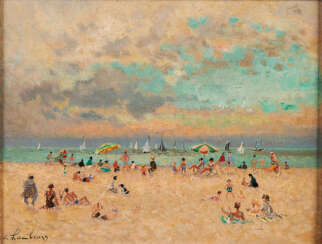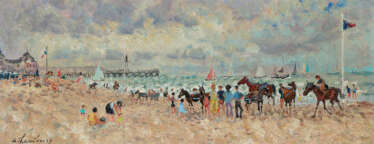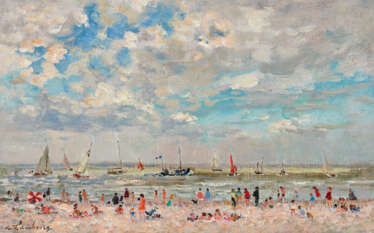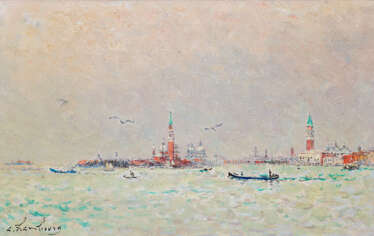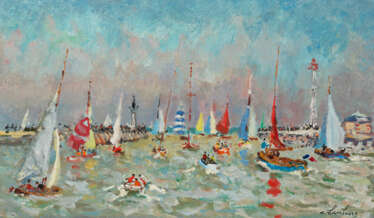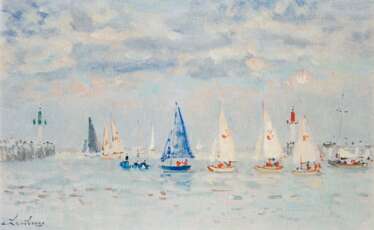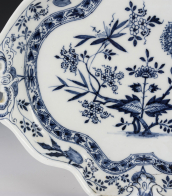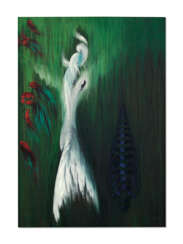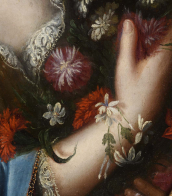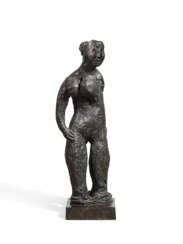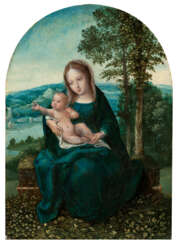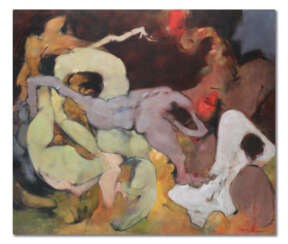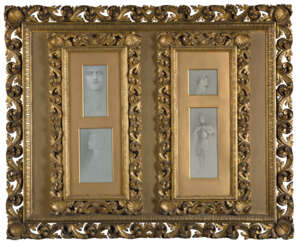andré hambourg
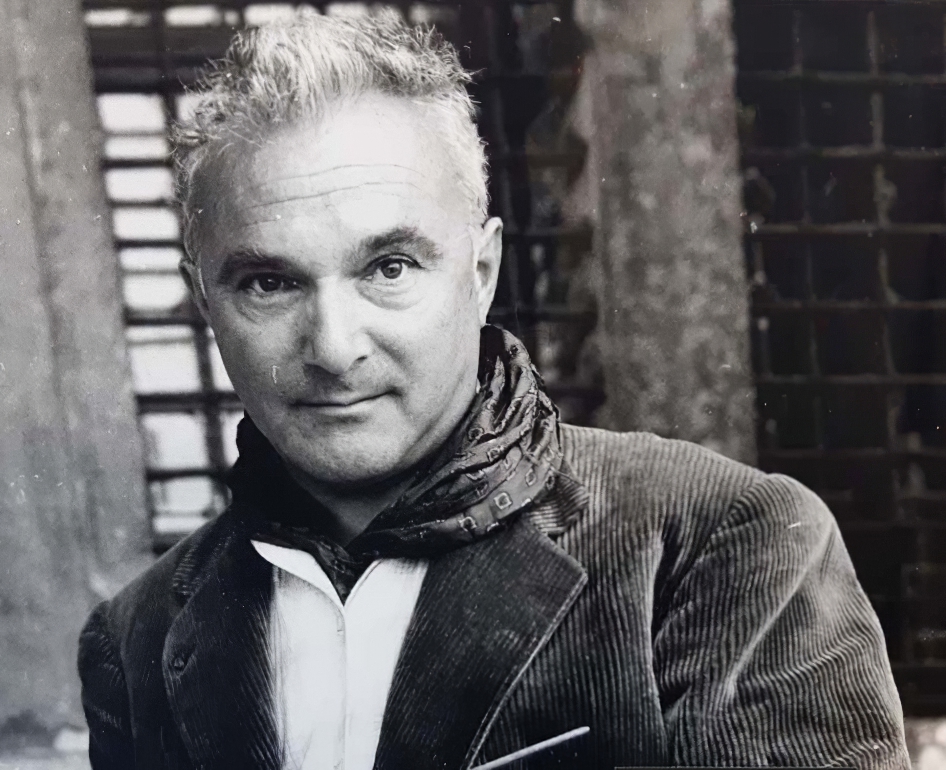
André Hambourg is a French artist of romantic Venetian compositions, luminous seascapes and beach scenes.
André Hambourg's work has been characterised as figurative and influenced by Post-Impressionism. He was able to capture the atmosphere and light of coastal regions, particularly the coast of Normandy and the Mediterranean Sea. His paintings were often characterised by vivid colours, a dynamic brushwork and a sense of movement.
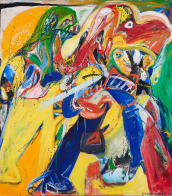

André Hambourg is a French artist of romantic Venetian compositions, luminous seascapes and beach scenes.
André Hambourg's work has been characterised as figurative and influenced by Post-Impressionism. He was able to capture the atmosphere and light of coastal regions, particularly the coast of Normandy and the Mediterranean Sea. His paintings were often characterised by vivid colours, a dynamic brushwork and a sense of movement.


André Hambourg is a French artist of romantic Venetian compositions, luminous seascapes and beach scenes.
André Hambourg's work has been characterised as figurative and influenced by Post-Impressionism. He was able to capture the atmosphere and light of coastal regions, particularly the coast of Normandy and the Mediterranean Sea. His paintings were often characterised by vivid colours, a dynamic brushwork and a sense of movement.


André Hambourg is a French artist of romantic Venetian compositions, luminous seascapes and beach scenes.
André Hambourg's work has been characterised as figurative and influenced by Post-Impressionism. He was able to capture the atmosphere and light of coastal regions, particularly the coast of Normandy and the Mediterranean Sea. His paintings were often characterised by vivid colours, a dynamic brushwork and a sense of movement.


André Hambourg is a French artist of romantic Venetian compositions, luminous seascapes and beach scenes.
André Hambourg's work has been characterised as figurative and influenced by Post-Impressionism. He was able to capture the atmosphere and light of coastal regions, particularly the coast of Normandy and the Mediterranean Sea. His paintings were often characterised by vivid colours, a dynamic brushwork and a sense of movement.

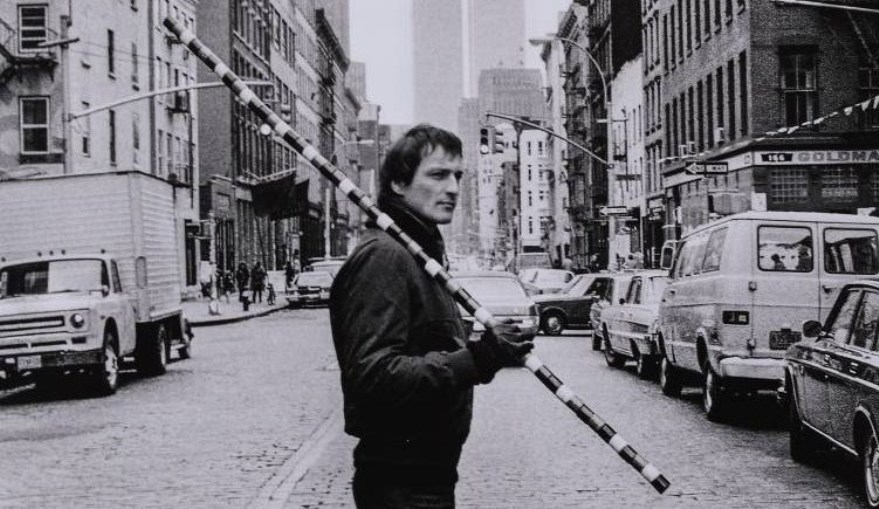
André Cadere is a Romanian and French conceptual artist.
Born in Warsaw, Poland, where his father was Romanian ambassador, Cadere emigrated to France in 1967. Living in Paris since 1971, along with Daniel Buren, Neale Toroni and François Morellet, he belongs to the most important figures of French minimalism and concept art of the 1970s. Cadere's work combines a simplified formal sculptural language with a conceptual approach that questions the workings of the art system, a combination that became important to a younger generation of artists in those years.
André Cadere is best known for his series of Barres de bois rond, multicolored wooden bars, begun in 1970 and continued for eight years until his death from cancer at the age of 44. The colors of the bars on these posts form a kind of code. His work not only challenged the traditional art-making practices of the time, but was also exhibited in unconventional places. It is known cases when he uninvited them at exhibitions of other artists, thus attracting attention to his work. For these shenanigans, the artist has been called "Stick Man." Although these works fall between abstract painting and minimalist sculpture, they have been an integral part of Cadere's performances and interventions.

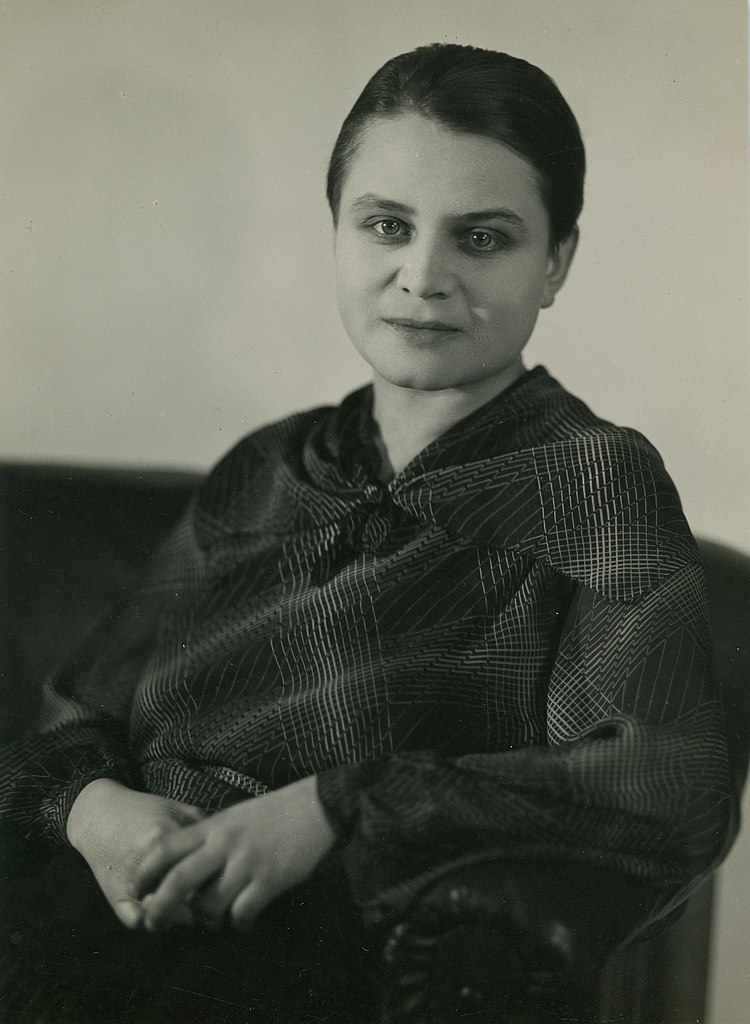
Toyen, born Marie Čermínová, was a prominent Czech artist known for her significant contribution to the Surrealist movement. Her work challenged conventions and explored the depths of the subconscious.
Toyen was known for her unique and evocative style, combining elements of fantasy, eroticism and dreams. Her work often features enigmatic figures, distorted landscapes, and symbolic motifs, executed with meticulous detail and a sense of mystery. She utilised a variety of techniques including painting, drawing and printmaking, thus demonstrating her versatility and artistic skill.
Throughout her career, Toyin collaborated with other Surrealist artists, including André Breton and Salvador Dalí. She actively participated in Surrealist exhibitions and contributed to various publications, demonstrating her artistic vision and ideological stance.

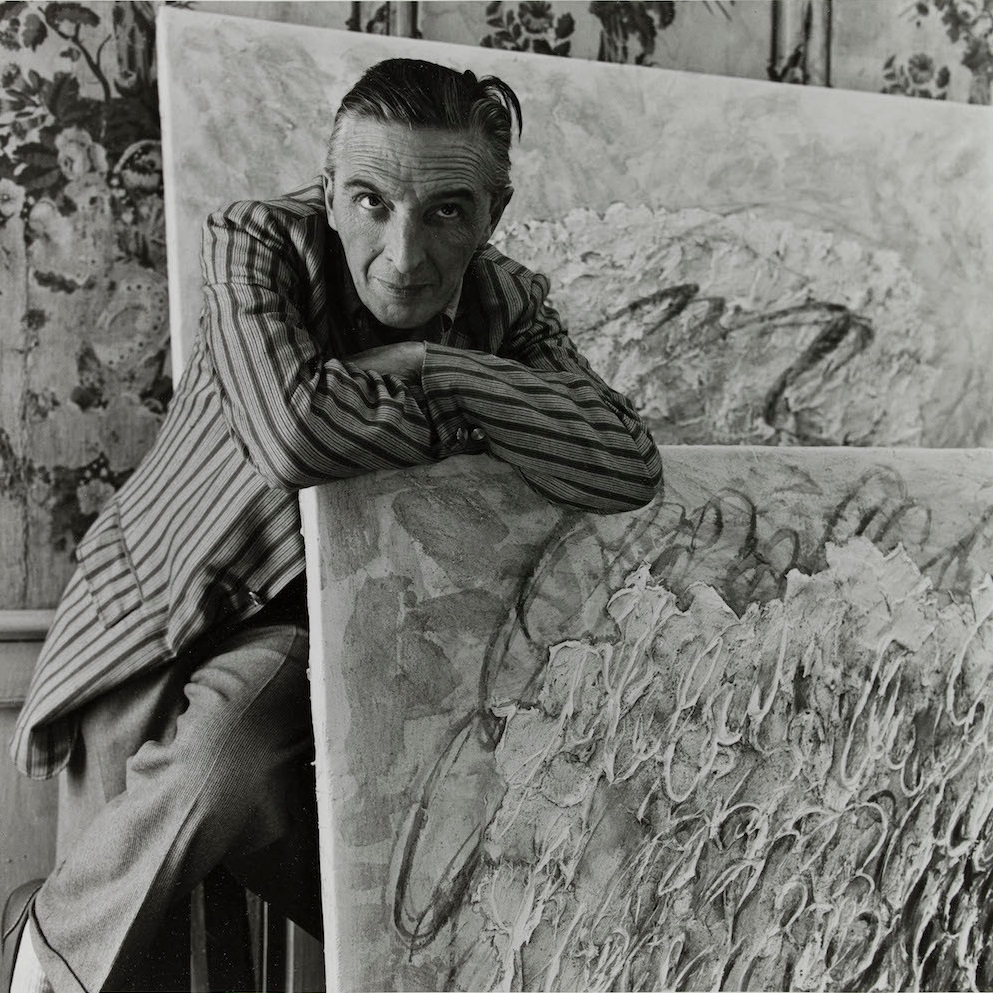
Jean Fautrier was a French painter and sculptor associated with the Art Informel and Tachisme movements. He initially studied architecture before turning to painting in the early 1920s.
Fautrier's early work was influenced by Cubism and Surrealism, but he eventually developed a more abstract style characterized by thick impasto and expressive brushwork. He often used unconventional materials, such as asphalt, sand, and tar, to create textured surfaces that conveyed a sense of materiality.
During World War II, Fautrier was active in the French Resistance and went into hiding to avoid arrest by the Nazis. His experiences during the war had a profound impact on his work, which became darker and more introspective. He began to create what he called "Hostage" paintings, which depicted anonymous faces and figures that were both haunting and vulnerable.
After the war, Fautrier continued to explore themes of violence, trauma, and decay in his art. He created a series of "Otages" (Hostages) sculptures that were made from casts of human limbs and torsos. These works were highly controversial and provoked strong reactions from critics and the public alike.
Fautrier's influence on the development of Art Informel and Tachisme was significant, and he is regarded as one of the key figures of the movement. His work is represented in many major museums and collections around the world, including the Centre Georges Pompidou in Paris and the Museum of Modern Art in New York.

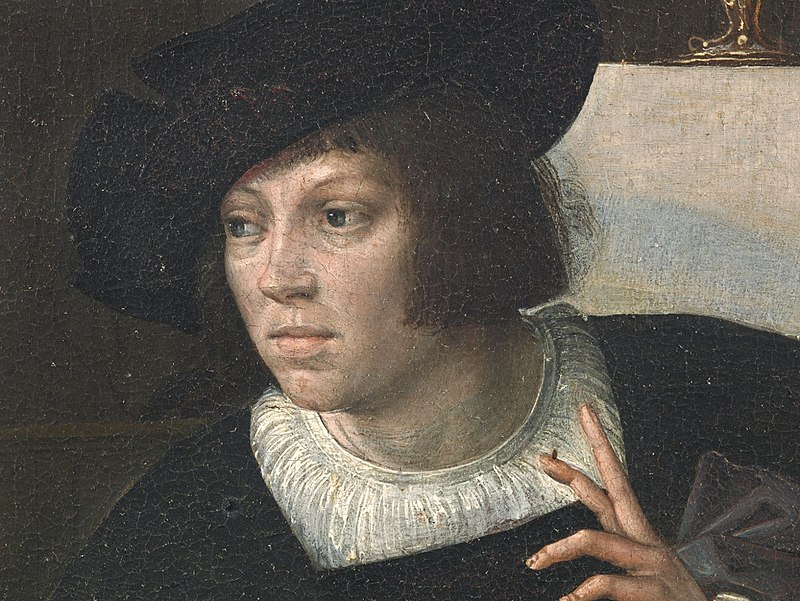
Bernard van Orley was a versatile Flemish artist and representative of Dutch and Flemish Renaissance painting, who was equally active as a designer of tapestries and, at the end of his life, stained glass. Although he never visited Italy, he belongs to the group of Italianizing Flemish painters called the Romanists, who were influenced by Italian Renaissance painting, in his case especially by Raphael.

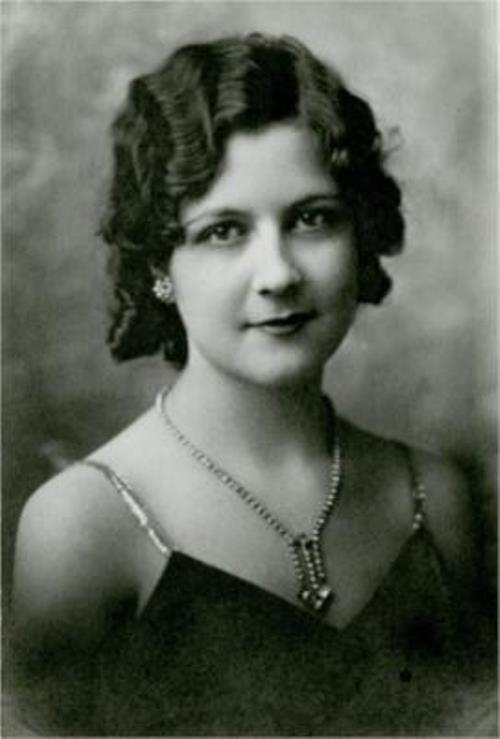
Dorothea Margaret Tanning was an American surrealist painter, printmaker, sculptor, writer and poet.
In 1935 Dorothea came to New York and worked as an advertising artist until she was inspired by the paintings of the famous Surrealists at an exhibition. She began to paint and exhibit and made numerous acquaintances among contemporary artists. In 1946 she married the artist Max Ernst, and this marriage lasted 30 years. They lived in Paris for a long time, and after his death in 1976, she returned to New York.
As an artist, Dorothea Tanning was self-taught, and her style was constantly changing. At first close to surrealism, by the late 1960s her paintings had become almost entirely abstract. Among her artistic accomplishments are paintings, prints, sculpture, stage design, costume and set designs for ballets, and her work has been exhibited at the Guggenheim Museum, the Metropolitan Museum of Art, the Tate Modern, and the Philadelphia Museum of Art.
In the late 1980s, Tanning began writing poetry, and her work has subsequently been published in various publications. Her first collection of poems, A Table of Content, was published in 2004. The multifaceted and versatile artist died in New York City at the age of 101.

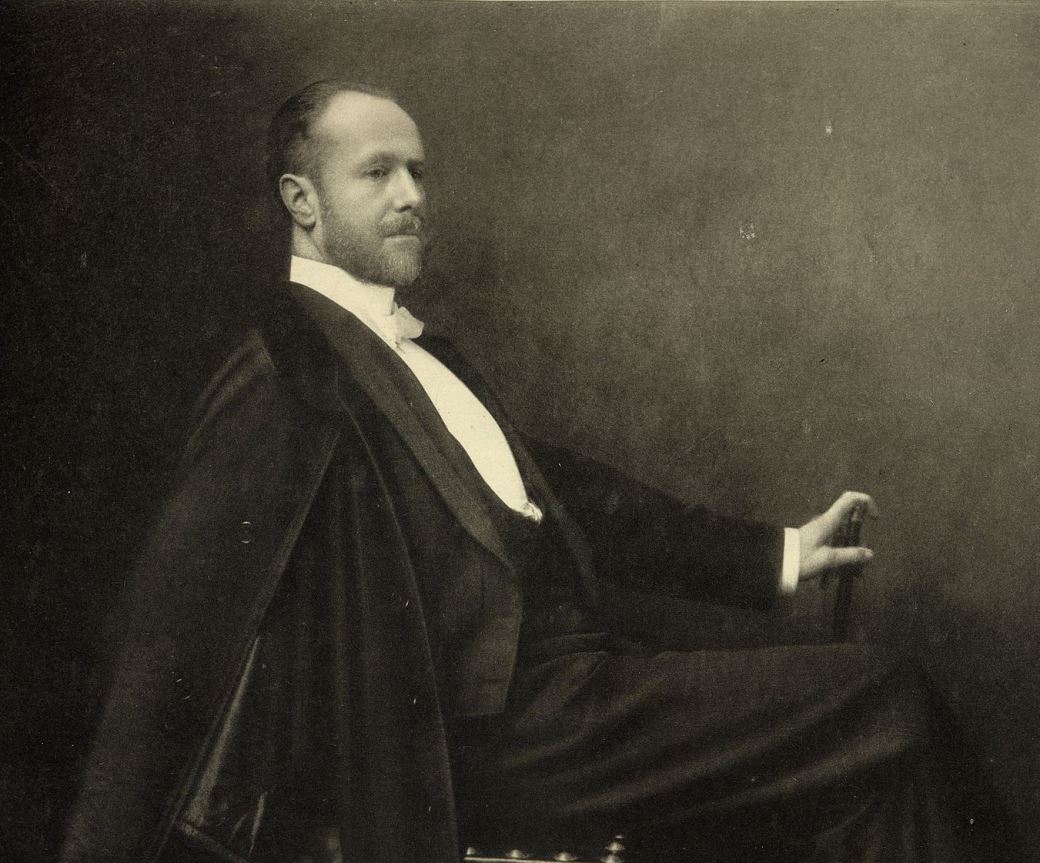
Fernand Khnopff, full name Fernand-Edmond-Jean-Marie Khnopff, was a Belgian Symbolist painter, graphic artist, sculptor and art historian.
Born into a wealthy family, Fernand attended the Royal Academy of Fine Arts in Brussels, where he studied painting with Xavier Mellerie. Throughout his years at the academy, Khnopff spent summers in Paris studying art, and at the 1878 World's Fair he saw the works of Pre-Raphaelite Edward Burne-Jones and Symbolist Gustave Moreau, which had a decisive influence on his work.
In the early 1880s Khnopff began to exhibit his Symbolist works, often inspired by literary works, particularly by Gustave Flaubert. His paintings combined precise realism with an ethereal fairy-tale atmosphere, and he also painted portraits.
In 1883 Khnopff co-founded Les Vingt, a group of Belgian avant-garde artists. From the early 1990s, he collaborated regularly with the Brussels opera house Royal de la Monnaie, designing costumes and sets for many productions. He also designed the interiors of Brussels' landmark buildings: the Maison Stoclet and the Hôtel de Ville in Saint-Gilles.

